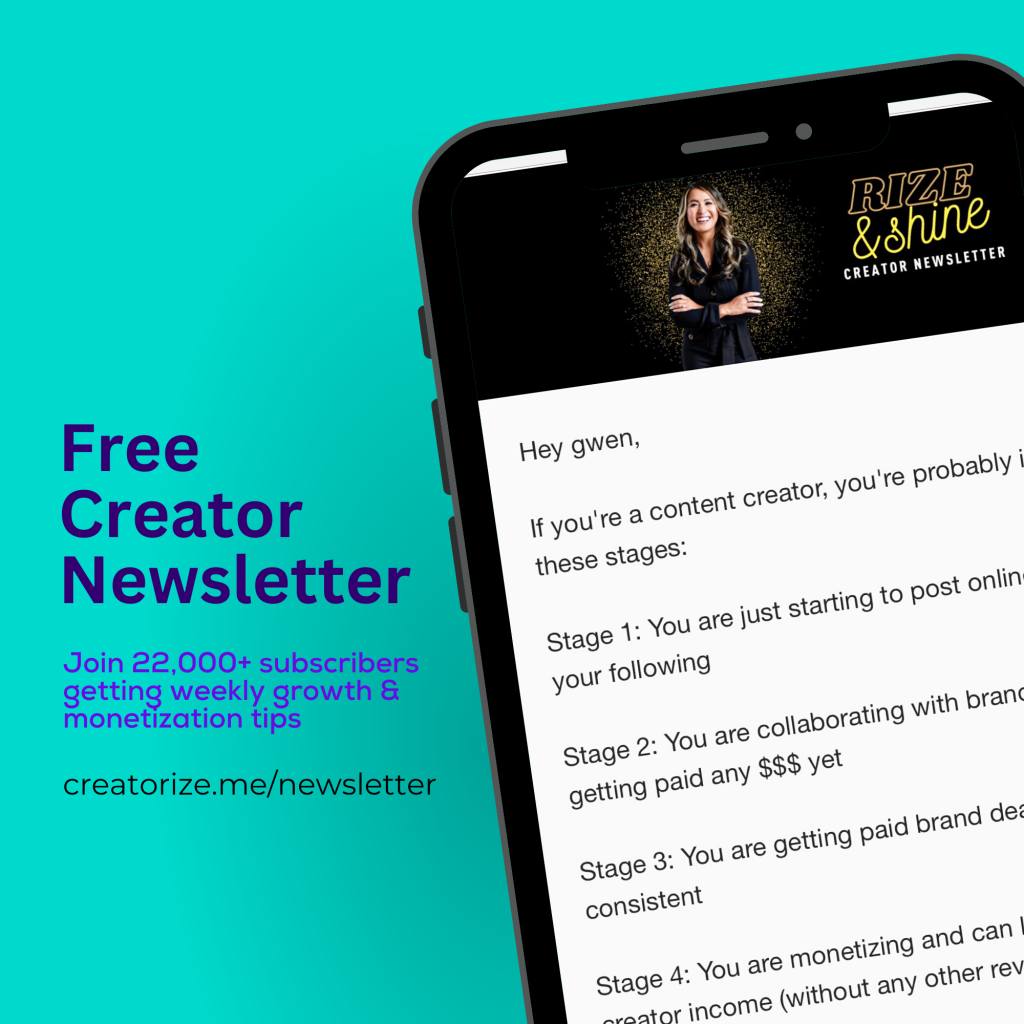The creator economy is an ever-growing ecosystem that encompasses over 50 million independent content creators, curators, and community builders. Individuals such as social media influencers, bloggers, videographers and others who craft content for online viewing are the main contributors to this ever-expanding ecosystem.
The rise of the gig economy has paved the way for these talented professionals to make money and earn income through various channels.
Table Of Contents:
- What is the creator economy
- The rise of the gig economy
- Social Media Influencers Driving Engagement
- Bloggers Sharing Knowledge in Various Niches
- Videographers Producing High-Quality Visual Content
- Top Startups & Tools for Influencers
- Creator Economy Tools: Platforms and Services for Content Creators
- FAQs: Creator Economy Tools
- Conclusion
Social Media Influencers Driving Engagement
Social media influencers play a significant role in driving engagement within the creator economy. They leverage their large followings on platforms like Instagram, TikTok, YouTube, and Twitter to promote products or services while creating unique content that resonates with their audience. As they continue to grow their presence online, making money from social media becomes increasingly viable through sponsored posts or brand partnerships.
Bloggers Sharing Knowledge in Various Niches
In addition to social media influencers, bloggers also contribute significantly to the creator economy by sharing knowledge across various niches such as fashion, travel, food, or technology. Blogging allows them not only to express themselves creatively but also to monetize their expertise through affiliate marketing programs or sponsored collaborations with brands relevant to their niche. Earning income from blogging has become more accessible than ever before thanks to user-friendly website building tools and readily available resources on SEO optimization.
Videographers Producing High-Quality Visual Content
Another group of content creators driving the creator economy are videographers who produce high-quality visual content for platforms like YouTube, Vimeo, or even Instagram’s IGTV. These talented individuals showcase their skills in storytelling and video editing while earning money through ad revenue sharing, sponsored collaborations, or selling stock footage to other creators. Earning money from YouTube has become a popular route for videographers seeking to monetize their craft.
In conclusion, the creator economy offers endless opportunities for content creators across various fields to earn income and make a living doing what they love. As more tools and resources become available within this ecosystem, we can expect continued growth and innovation that will shape the future of online business.
The creator economy is a growing ecosystem of over 50 million independent content creators, including social media influencers, bloggers, and videographers who monetize their expertise through various channels. Social media influencers drive engagement by promoting products or services while creating unique content that resonates with their audience; bloggers share knowledge across various niches to express themselves creatively and monetize their expertise; and videographers produce high-quality visual content for ad revenue sharing, sponsored collaborations or selling stock footage to other creators.
Top Startups & Tools for Influencers
The creator economy has given rise to a plethora of startups and tools designed specifically to help content creators grow their businesses, expand their reach, and monetize their content. With over 100 companies focusing on this niche market, there’s no shortage of resources available for influencers looking to enhance their skills or generate income from their work.
Affinity’s Professional Photo Editing Tools
Affinity offers a suite of professional photo editing tools that cater directly to the needs of content creators. Their software includes Affinity Photo, Designer, and Publisher – each providing powerful features for image manipulation, graphic design, and layout creation respectively. By utilizing these advanced applications in tandem with one another, creators can produce visually stunning content that captivates audiences across various platforms.
Motion Photos Assisting Podcasters with Audience Growth
For podcasters seeking new ways to engage listeners and monetize their audio creations, Motion Photos provides an innovative solution. This platform allows users to transform static images into dynamic motion photos synced perfectly with podcast episodes. As a result, creators can share eye-catching visuals alongside audio clips on social media platforms like Instagram or Twitter – driving increased engagement and ultimately revenue opportunities.
List Of Other Notable Creator Economy Tools:
- Patreon: A popular crowdfunding platform enabling fans to support artists through monthly subscriptions in exchange for exclusive perks.
- OnlyFans: A content subscription service allowing creators to monetize their work by offering exclusive access to subscribers.
- Substack: A platform for writers and journalists to create paid newsletters, expanding their reach and earning income from subscriptions.
- Gumroad: An e-commerce platform enabling creators to sell digital products like ebooks, courses, or software directly to fans.
As the creator economy continues its rapid growth, content creators have more opportunities than ever before to make money and earn income. By leveraging these top startups and tools in tandem with a strategic approach, creators can effectively build sustainable businesses that thrive on multiple revenue streams beyond traditional advertising models. Social media and web 2.0 have made it easier than ever to earn money and monetize your content, and these tools are just the beginning.
The creator economy has given rise to numerous startups and tools designed specifically for content creators. Affinity offers professional photo editing tools, while Motion Photos assists podcasters with audience growth. Other notable Creator Economy Tools include Patreon, OnlyFans, Substack, and Gumroad – all of which enable creators to monetize their work through various revenue streams beyond traditional advertising models.
Subscription-Based Funding Models
The rise of the creator economy has led to an increasing number of media platforms building infrastructure that allows content creators to charge subscription fees directly on their channels. This trend is giving birth to new business models where fans can support artists through recurring payments while gaining access to exclusive benefits such as premium content or early releases.
Patreon Offers Tiered Subscriptions for Different Perks
Patreon is a popular platform that enables creators to offer tiered subscriptions, providing different perks and rewards based on the level of financial support provided by fans. By offering various tiers, creators can cater to diverse audience preferences and budgets, ensuring a more inclusive experience for all supporters. Patreon’s model not only helps content creators earn income but also fosters stronger connections between them and their fanbase.
YouTube Memberships Allow Channel-Based Subscriptions
In addition to ad revenue, YouTube introduced Memberships, allowing channel-based subscriptions as another way for creators in the creator economy space to monetize their work. Fans can subscribe at different levels with varying perks like custom emojis, badges, members-only live chats, and exclusive videos. This feature empowers YouTubers with additional income streams while rewarding loyal subscribers with unique experiences.
- Twitch: The popular streaming platform offers its own subscription system called “Twitch Subs,” allowing viewers to support their favorite streamers on a monthly basis and receive exclusive benefits such as ad-free viewing, custom emotes, and chat privileges.
- Substack: Writers can monetize their work through “Substack“, a platform that allows them to charge subscription fees for access to newsletters or other written content. This model enables writers in the creator economy space to earn money directly from readers who value their work.
- OnlyFans: Creators across various niches can offer exclusive content behind a paywall on “OnlyFans“. The platform is known for its adult content but has expanded into other areas like fitness, cooking, and more. It provides creators with an additional revenue source while offering fans unique experiences not found elsewhere.
In conclusion, the growing popularity of subscription-based funding models in the creator economy signifies a shift towards direct fan support rather than relying solely on ads or sponsorships. As platforms continue to evolve and adapt to meet the needs of both creators and consumers alike, we can expect even more innovative ways for content creators to generate income while providing valuable experiences for their audiences.
Targeting Fan Communities for Sales Opportunities
In the ever-evolving creator economy, several startups are focusing on engaging fan communities before targeting them for sales opportunities. By investing time in understanding what drives fandoms’ passion points and providing tailored experiences around those interests, these companies aim to convert followers into paying customers more effectively than traditional marketing strategies would allow.
SignalFire’s Investment in Karat
SignalFire, a venture capital firm that invests in early-stage technology companies, recently invested in Karat. This startup offers an innovative approach to monetizing content creators by offering financial products specifically designed for influencers. With their unique insights into the creator community, they can better serve this growing market segment and help influencers turn their passions into sustainable businesses.
Fan-Centric Marketing Strategies: Authenticity Matters
- Engage with fans: As a content creator, it’s important to actively engage with your audience through social media platforms like Instagram or Twitter to build trust and foster genuine connections. Responding to comments or questions from fans can go a long way towards establishing loyalty among your followers.
- Create exclusive content: Offering exclusive content or access to special events is another effective way of nurturing fan communities. Platforms such as Patreon enable creators to provide tiered subscription options where fans can gain access to premium content depending on their level of support.
- Collaborate with like-minded creators: Partnering with other influencers who share similar values and interests can help expand your reach and provide new opportunities for monetization. Collaborative projects or co-branded merchandise are just a few examples of how creators can work together to grow their businesses.
Leveraging Creator Economy Tools for Fan Engagement
In addition to the strategies mentioned above, content creators should also take advantage of various tools available in the creator economy space. For instance, platforms like Shopify make it easy for influencers to set up an online store and sell merchandise directly to fans. Likewise, services such as Twitch provide creators with the opportunity to monetize their content through donations and ads while engaging with viewers in real-time.
The key takeaway is that targeting fan communities before sales opportunities not only helps build stronger relationships but also increases the chances of converting followers into paying customers. By leveraging innovative startups and tools designed specifically for this purpose, content creators can unlock new revenue streams while staying true to their passions.
Startups in the creator economy are targeting fan communities to increase sales opportunities by understanding their passion points and providing tailored experiences. SignalFire recently invested in Karat, a startup that offers financial products for influencers. Content creators should engage with fans, create exclusive content, collaborate with like-minded creators, and leverage creator economy tools such as Shopify and Twitch to unlock new revenue streams while staying true to their passions.
Creator Economy Tools: Platforms and Services for Content Creators
The creator economy is a rapidly growing sector that offers opportunities for content creators, social media influencers, YouTubers, Twitter creators, TikTok stars, bloggers, Instagram creators, video creators, podcasters, and more to make money and earn income. To succeed in this competitive landscape, it is essential to stay updated on the latest platforms and services that can help streamline operations, facilitate collaboration, and offer tools and resources to grow your business.
Streamlining Payment Processing for Seamless Transactions
Efficient payment processing systems are crucial for influencers to receive funds from various sources, such as brand partnerships or fan subscriptions. Platforms like Stripe offer seamless integration with websites and apps while ensuring secure transactions. Additionally, services like Gumroad make it easy for creators to sell digital products directly through social media channels without needing a separate e-commerce platform.
Facilitating Collaboration Between Creators and Brands
To help content creators find lucrative partnership opportunities with brands looking for influencer marketing campaigns, several platforms connect both parties based on mutual interests. For instance, Grapevine Logic matches YouTube influencers with relevant advertisers by analyzing channel demographics and audience engagement metrics. Similarly, sites like AspireIQ and Popular Pays provide curated lists of potential collaborators tailored specifically towards individual creator niches.
Offering Tools and Resources to Help Creators Grow Their Businesses
Creator economy platforms also offer a variety of tools and resources to help creators scale their businesses, expand into new markets, and monetize content in innovative ways. For example, Canva provides easy-to-use design templates for social media posts, while Hootsuite offers social media management tools to schedule posts and track analytics. Additionally, Patreon enables creators to earn recurring income from fans by offering exclusive content and perks.
By leveraging these creator economy tools effectively, influencers can focus more on creating high-quality content while enjoying multiple revenue streams beyond traditional advertising. Stay updated on the latest platforms and services to stay ahead of the competition and grow your business.
The creator economy is a rapidly growing sector that offers opportunities for content creators to make money and earn income. Efficient payment processing systems, collaboration platforms, and resources to help creators grow their businesses are essential tools in this competitive landscape. By leveraging these tools effectively, influencers can focus more on creating high-quality content while enjoying multiple revenue streams beyond traditional advertising.
FAQs: Creator Economy Tools
What platforms are used in the creator economy?
Various platforms are utilized in the creator economy, including Patreon, YouTube Memberships, Twitch, Substack, and OnlyFans. These platforms enable content creators to monetize their work through subscriptions or one-time payments from fans. Additionally, social media sites like Instagram and TikTok provide opportunities for influencers to collaborate with brands and generate income.
What are the Creator tools?
Creator tools encompass a wide range of software and services designed to assist content creators in producing high-quality work while managing their online presence effectively. Examples include Affinity’s photo editing tools for photographers, Motion Photos for podcasters, scheduling apps like Buffer or Hootsuite, video editing software such as Adobe Premiere Pro or Final Cut Pro, and analytics tools like Google Analytics or Socialbakers.
What is the concept of creator economy?
The creator economy refers to an ecosystem where individuals create digital content (such as videos, articles, podcasts) that they monetize through various channels (e.g., advertising revenue sharing programs). This model allows independent creators to build sustainable businesses based on their unique skills and talents while providing value-added experiences for consumers who support them financially.
Why is the creator economy important?
The importance of the creator economy lies in its ability to empower individuals by offering new avenues for generating income outside traditional employment structures. It fosters innovation by enabling creative professionals across different niches to reach global audiences more easily than ever before. Furthermore, it contributes significantly towards democratizing access to information by promoting diverse voices within various fields.
Conclusion
From social media influencers to videographers, the creator economy is rapidly growing and evolving. Creators can now leverage a range of tools to optimize their workflow, monetize content, and foster meaningful connections with fans.
In addition to subscription-based funding models like Patreon and YouTube Memberships, targeting fan communities for sales opportunities has become an increasingly popular strategy. Platforms such as SignalFire’s investment in Karat are facilitating collaboration between creators and brands while streamlining payment processing for seamless transactions.
If you’re a content creator aiming to up your game, there are numerous Creator Economy Tools that could be beneficial. Creatorize offers comprehensive solutions that can help you grow your audience and monetize your content more efficiently than ever before – check out our services at Creatorize.me/ai.





